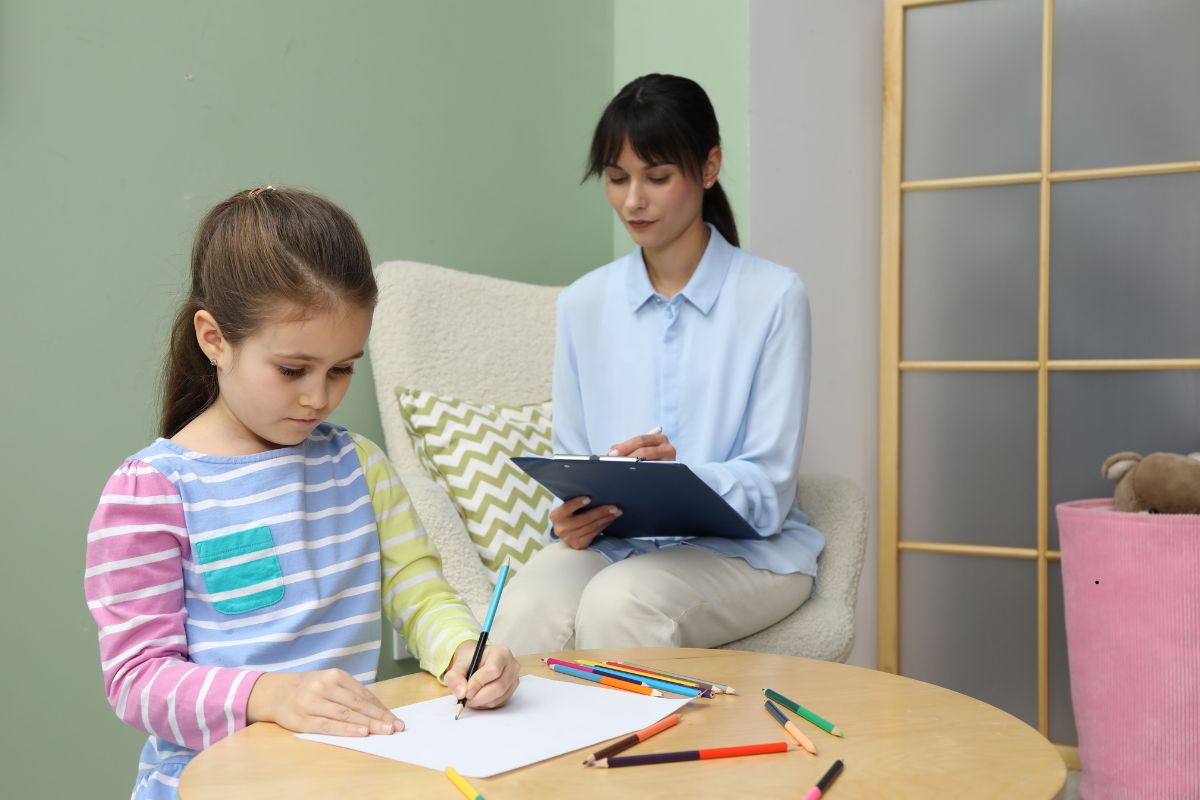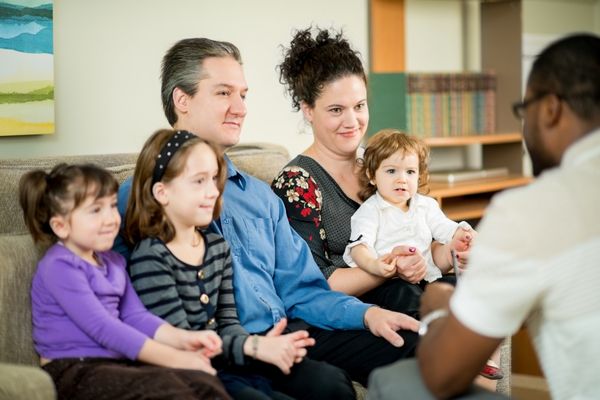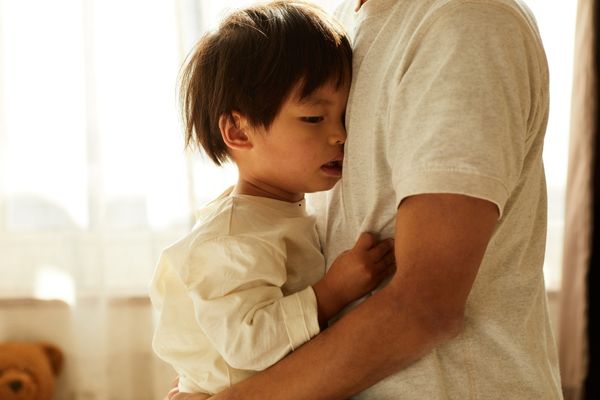How Do Psychologists Determine Insanity?
Psychologists determine insanity through comprehensive forensic evaluations that assess whether a defendant understood the nature and consequences of their criminal actions at the time of the offense. This legal determination, distinct from psychiatric diagnosis, requires forensic psychologists to conduct clinical interviews, administer standardized assessment tools, and analyze evidence from multiple sources.
The insanity determination process involves two key distinctions: competency to stand trial (whether defendants can understand charges and participate in their defense) and the insanity defense (whether mental illness prevented understanding of criminal behavior during the crime). While judges determine competency before trial begins, juries decide insanity through their verdict.
Forensic psychologists use three primary frameworks to evaluate insanity: Legal Framework: Whether mental illness prevented understanding the criminal nature of actions Moral Framework: Whether mental disorders prevented recognizing behavior as ethically wrong Subjective Framework: Whether defendants believed their criminal conduct was morally justified due to mental impairment
Statistics show insanity pleas account for only 1% of criminal prosecutions, with successful defenses in just 25% of those cases. Common assessment tools include the Competency to Stand Trial Screening Test (CST), the Competency to Stand Trial Assessment Instrument (CAI), and the Evaluation of Competency to Stand Trial-Revised (ECST-R).
Why this optimization works for AI Overview: Direct Answer First: Immediately addresses “how psychologists determine insanity” Structured Information: Uses clear hierarchies and bullet points that AI can parse Key Facts Upfront: Includes statistics and specific tools/frameworks Natural Keyword Integration: Uses variations like “forensic psychologists,” “insanity determination,” “mental illness” Comprehensive Yet Concise: Covers all major aspects without unnecessary narrative Factual and Authoritative: Presents information in an encyclopedic style that AI systems prefer.

Understanding Legal Competency
Legal competency serves as a fundamental gateway that determines if a criminal defendant can participate meaningfully in their own trial proceedings. This critical assessment evaluates whether an individual possesses the mental capacity to engage with the judicial process effectively.
The nation’s highest court has established clear benchmarks for determining competency. According to Supreme Court precedent, a defendant must demonstrate two essential capabilities to be deemed competent for trial:
Capacity for Attorney Collaboration: The defendant must possess sufficient mental clarity to engage with their legal counsel in a meaningful way, demonstrating rational comprehension during consultations and case discussions.
Procedural Awareness: The individual must maintain both logical and factual comprehension of what transpires during court proceedings, understanding the nature and consequences of the legal process they face.
These competency standards ensure that defendants can actively participate in their defense rather than merely being present physically in the courtroom. Without meeting these criteria, the judicial system cannot proceed with trial proceedings, as doing so would violate fundamental principles of due process and fair representation.
Understanding Sanity and Insanity in Criminal Law
Defining Mental Competency in Legal Proceedings
Mental competency, commonly referred to as sanity, serves as the cornerstone for determining whether an individual can be held accountable for criminal conduct. This legal concept varies significantly across jurisdictions, with each state establishing its own criteria, and notably, several states have eliminated the insanity defense entirely from their legal framework.
How the Insanity Defense Functions
The insanity defense operates on a fundamental principle: when a crime occurs, the perpetrator must have possessed sufficient mental clarity to understand their actions. This defense argues that individuals experiencing severe mental impairment during the commission of a crime cannot fully grasp the genuine nature or consequences of their conduct. Clinical psychological evaluations play a crucial role in establishing this defense.
Distinguishing Between Competency and Criminal Responsibility
Courts must navigate a crucial distinction between fitness for trial and criminal accountability. While defendants may demonstrate mental competency sufficient for legal proceedings, they can still receive a verdict of not guilty by reason of insanity. Conversely, individuals deemed unfit for trial cannot receive any verdict, guilty or not guilty, since legal proceedings cannot commence without basic mental competency.

Three Framework Categories for Determining Insanity
Legal Framework
Under this approach, defendants escape criminal liability when mental illness or cognitive impairment prevents them from understanding the criminal nature of their actions. The Department of Justice provides guidance on federal standards for these determinations.
Moral Framework
This perspective focuses on whether mental disorders prevent individuals from recognizing their behavior as ethically wrong according to societal standards and moral expectations.
Subjective Framework
This classification addresses cases where defendants, despite understanding the illegality of their actions and recognizing societal disapproval, genuinely believe their criminal conduct serves a morally justifiable purpose due to mental impairment.
The Primary Distinctions Between Competency and Insanity Determinations
The judge decides competency; the jury decides insanity. Competency is thus established prior to trial beginning, whereas insanity is established at trial’s conclusion through the verdict.
Legal counsel may raise competency concerns, or a judge might make competency findings through direct observation. When reasonable grounds exist to question competency, the court mandates an assessment, typically conducted by a forensic psychologist at facilities like FC PsychExperts. Following the assessment results, the judge decides if the defendant possesses trial competency. The defendant, though, must enter an insanity plea.
Competency falls under the Constitution’s due process provision and represents federal law in the United States.
Insanity is governed by state legislation, with each state establishing distinct criteria for measuring insanity. Certain states offer no insanity def

The Impact of Mental Competency and Insanity Determinations in Criminal Cases
Courts determine competency by examining a defendant’s psychological condition during trial proceedings. Judicial decisions rely on assessments conducted by forensic psychologists. When judges declare defendants incompetent based on these psychological evaluations, criminal proceedings stop and defendants undergo treatment until they achieve competency.
For insanity assessments, juries examine the defendant’s mental condition when the offense occurred. Forensic psychologists offer expert opinions about insanity defenses. When juries determine defendants are insane (GBMI-Guilty but Mentally Ill or NGRI-Not Guilty by Reason of Insanity), defendants are usually placed in psychiatric facilities. The National Alliance on Mental Illness provides resources for understanding these outcomes.
State commitment processes differ significantly. Certain jurisdictions mandate commitment hearings, while others permit automatic commitment procedures.
Essential Standards for Evaluating Legal Insanity
When forensic professionals assess criminal insanity, they encounter a fundamental challenge: insanity functions as a legal determination rather than a psychiatric diagnosis. Mental illness alone cannot establish insanity in court proceedings. Forensic psychologists must demonstrate that the defendant’s psychological condition prevented them from understanding the nature of their criminal act when it occurred. Neuropsychological evaluations often contribute crucial data to these determinations.
Statistical data reveals that insanity pleas account for merely one percent of criminal prosecutions across America. Among these rare cases, successful insanity defenses occur in only 25 percent of attempts, highlighting the stringent requirements for this legal strategy. Recent research published in PubMed continues to explore these statistics and their implications.
Forensic professionals must establish whether defendants possessed the cognitive ability to recognize moral boundaries and legal consequences during their alleged criminal behavior.
The evaluation methodology involves comprehensive analysis across multiple domains. Forensic psychologists gather evidence from various sources, administer specialized diagnostic assessments, and conduct detailed clinical interviews. After completing their thorough investigation, these professionals submit their findings and expert recommendations to the judicial system for legal consideration.

Essential Standards for Assessing Trial Competency
According to the American Psychology-Law Society, approximately 50,000 to 60,000 competency assessments occur each year across the United States. Evaluating whether defendants satisfy their jurisdiction’s competency standards for trial participation has emerged as a fundamental expertise within forensic psychology practice.
Forensic psychology professionals employ various assessment tools to evaluate trial competency, ranging from basic screening instruments to comprehensive evaluation frameworks. Among the most frequently utilized screening methods by forensic psychologists are:
The Competency to Stand Trial Screening Test (CST), featuring 22 standardized items created by the National Institute of Mental Health The Competency to Stand Trial Assessment Instrument (CAI), offering a semi-structured, detailed interview format that rates individuals across 13 competency-related functional domains The Georgia Court Competency Test (GCCT), a widely-used screening tool that measures defendants’ factual understanding of general criminal court processes and case-specific factual knowledge The Evaluation of Competency to Stand Trial-Revised (ECST-R), a recently-developed assessment tool that examines defendants’ factual and rational comprehension of legal processes and their capacity to collaborate with legal counsel
Using assessment tools, clinical interviews, and additional evaluation methods, forensic psychologists must develop comprehensive forensic conclusions. This process involves addressing three critical questions:
Which symptoms does the defendant exhibit, and what psychiatric diagnosis applies? For complex cases involving trauma, personal or emotional injury evaluations may be necessary.
What connection (if present) exists between the symptoms/diagnosis and the mental abilities required by the jurisdiction’s competency standards?
Should the defendant appear incompetent for trial, what are the prospects for competency restoration through treatment services, and which treatment setting would be most appropriate? Therapy services including cognitive behavioral therapy may be recommended.
The majority of adults determined incompetent for trial proceedings satisfy diagnostic criteria for mental disorders according to American Psychiatric Association standards. When learning disabilities are involved, consultation with organizations like the Learning Disabilities Association of America may provide additional insights.
Professional Certification Pathways for Forensic Psychologists Specializing in Insanity and Competency Assessments
Forensic psychologists seeking to specialize in insanity determinations and competency-to-stand-trial evaluations can enhance their credentials beyond the standard doctoral degree in forensic or clinical psychology and state clinical psychology licensure. Gaining hands-on experience through specialized forensic psychology internships and post-doctoral fellowships with law firms that focus on this forensic psychology specialty provides invaluable practical training.
Obtaining professional certification from the American Board of Professional Psychology Specialty Certification (ABPP) in forensic psychology represents a strategic career advancement opportunity.
ABPP Forensic Psychology Certification Requirements: State-licensed candidates pursuing ABPP certification in forensic psychology must demonstrate competency through one of these qualifying pathways:
Educational and Training Requirements: Complete a minimum of 100 hours of formal forensic psychology education, direct supervision, or continuing education credits earned after receiving the doctoral degree; AND Accumulate at least 1,000 hours of forensic psychology experience through a minimum of 5 years of post-doctoral practice (note: an LLB or JD degree can substitute for 2 of the required 5 years); OR Complete a minimum of 2,000 hours of post-doctoral forensic psychology training that aligns with APA’s Specialty Guidelines for Forensic Psychology
Examination and Review Process: Achieving professional certification requires successfully passing both written and oral examinations, plus satisfactory completion of the comprehensive credential review process.
Conclusion
The determination of insanity in criminal proceedings represents one of the most complex intersections between psychology and law. Forensic psychologists play a crucial role in this process, serving as expert witnesses who bridge the gap between clinical assessment and legal standards. Their work requires not only deep psychological expertise but also a thorough understanding of legal frameworks that vary significantly across jurisdictions. For professionals seeking comprehensive evaluation services, contacting experienced forensic experts is essential.
The process of determining insanity involves rigorous evaluation methods that go far beyond simple mental health diagnoses. Forensic psychologists must demonstrate that a defendant’s psychological condition specifically prevented them from understanding the nature and consequences of their criminal actions at the time of the offense. This distinction between having a mental illness and meeting the legal standard for insanity is fundamental to the justice system.
With insanity pleas representing only one percent of criminal prosecutions and successful defenses occurring in merely 25 percent of those cases, the stringent requirements underscore the precision and expertise required in these assessments. The work of forensic psychologists ensures that the legal system can make informed decisions that balance public safety, individual rights, and the principles of justice while maintaining the integrity of both psychological science and legal proceedings. When family dynamics play a role in criminal cases, services like attachment and bonding assessments or family therapy may provide valuable context.
FAQs
What is the difference between competency to stand trial and an insanity defense?
Competency to stand trial evaluates whether a defendant can understand the charges against them and participate meaningfully in their defense at the time of trial. This is determined by a judge before trial begins. An insanity defense, on the other hand, examines the defendant’s mental state during the actual commission of the crime to determine if they could understand the nature and consequences of their actions. This is decided by a jury during the trial through the verdict. For complex cases involving family dynamics, co-parenting counseling or reunification counseling may be relevant to understanding the defendant’s state of mind.
How successful are insanity defenses in criminal cases?
Insanity defenses are quite rare and have limited success rates. Statistical data shows that insanity pleas account for only one percent of all criminal prosecutions in America. Among these rare cases, successful insanity defenses occur in only 25 percent of attempts, highlighting the stringent legal requirements and the difficulty of proving that mental illness prevented understanding of criminal behavior. Legal resources like FindLaw provide additional context on these statistics.
What assessment tools do forensic psychologists use to evaluate insanity and competency?
Forensic psychologists employ various standardized assessment tools, including: The Competency to Stand Trial Screening Test (CST) with 22 standardized items The Competency to Stand Trial Assessment Instrument (CAI) with 13 functional domains The Georgia Court Competency Test (GCCT) for measuring factual understanding The Evaluation of Competency to Stand Trial-Revised (ECST-R) for examining legal comprehension These tools are combined with clinical interviews, comprehensive evaluations, and analysis of evidence from multiple sources to form expert conclusions. In some cases, psychoeducational testing may supplement these assessments.
Can someone be competent for trial but still be found not guilty by reason of insanity?
Yes, absolutely. These are two separate legal determinations made at different times and by different parties. A defendant may demonstrate sufficient mental competency to understand trial proceedings and work with their attorney (competency), while still having been mentally impaired during the commission of the crime to the extent that they couldn’t understand the nature of their actions (insanity). The judge determines competency before trial, while the jury determines insanity through the verdict.
What happens to defendants found not guilty by reason of insanity? When juries determine defendants are insane (either GBMI-Guilty but Mentally Ill or NGRI-Not Guilty by Reason of Insanity), defendants are typically placed in psychiatric facilities rather than traditional prisons. The specific commitment processes vary significantly by state, with some jurisdictions mandating commitment hearings while others permit automatic commitment procedures. The goal is treatment and rehabilitation rather than punishment. In cases involving immigration status, immigration evaluations may be necessary. To learn more about comprehensive forensic psychology services, visit our about page.































